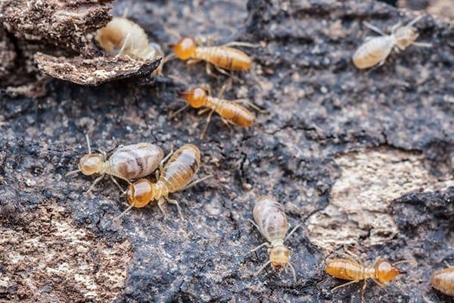Termite infestations are a serious problem for South Carolina homeowners because the humid climate creates the perfect conditions for colonies to flourish.
While your house may have had a termite inspection before you moved in, you need to stay vigilant with your efforts to prevent and detect infestations. As you conduct your normal home maintenance routine, watch for these signs that you may need professional termite treatment.
Discovering Mud Tunnels
Termites use mud tunnels as a form of protection as they travel from their nests to sources of water, and subterranean termites create these tunnels most often. Look for small, pencil-sized mud tubes along the foundation and walls of your house.
Although a mud tunnel may be inactive, seeing these anywhere on the exterior of your house indicates a possible pest infestation. Arrange for a professional termite inspection to find out if the tunnels are active along with whether or not your house has sustained damage.
Seeing Swarms or Discarded Wings
Reproductive termites engage in a behavior called swarming as they search for their mates. Typically, swarms happen most often in the spring, but warm weather conditions can cause them to swarm at any time of the year.
When a swarm is active, you may notice the winged termites flying in a large group. However, swarms are usually brief, and you may mistake these for other insects such as flying ants or mosquitoes.
However, unlike other insects, termites lose their wings after the swarm is over. When this happens, you may find discarded wings near areas that termites infest. For this reason, finding a pile of multiple wings is a major indicator of a termite problem.
Finding Frass or Termite Droppings
Drywood termites leave telltale signs outside of their colonies. As they burrow through the wood, they produce excrement that they push out of the small holes that indicate the entrances to their nest. Termite frass looks like a pile of small brown pellets located near wooden areas of your house.
Noticing Noise Coming From Inside the Walls
At first, termite infestations are relatively quiet, and they can continue for years since the insects hide deep within your walls. Over time, the colonies increase in number, and large groups of termites can create noticeable sounds.
Soldier termites use a head-banging motion to generate knocking sounds to alert the other members of their colony when danger is present. These sound like small taps against the wood. You can also hear scratching noises that termites make as they chew through the wood to make tunnels.
Hearing a Hollow Sound
The majority of wood damage caused by termites lurks beneath the surface. Because this damage is not always visible on the outside, one strategy that you can use to check for termites is to knock on the wood. Severe damage results in a hollow sound.
Identifying an Actual Termite
It is rare to see termites because their tunnels keep them well hidden, but you may occasionally come across one if you inspect closely enough. Most termites look like small, white ants with an almost translucent body. Reproductive termites may have two sets of wings that are the same size.
Struggling to Open Doors and Windows
Property owners often associate sticking doors and windows with a faulty foundation or warping caused by humidity in the building. However, termites also produce moisture that causes wood to warp. As this process occurs, doors and windows may no longer function properly.
Termite infestations can go on for years and slowly destroy the structure of your house. When you suspect termites, contact Bugman Pest Elimination, Inc. for a professional inspection that addresses your concerns. To get started with effective termite protection, give us a call today!
Schedule Your Free Inspection
Complete the form below to schedule your no-obligation inspection.

